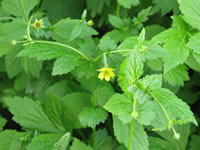on buttercups
15/06/13 13:07
I recall from secondary school biology being taught how to use a Linnaeus key by identifying a meadow buttercup. Little did I know then that there are over a couple of dozen members of the buttercup family in Britain, with some of them looking nothing like the yellow flower which glows when you put it under the chin…
There are at least three species of buttercup on the lane:
meadow buttercup (Ranunculus acris)
goldilocks buttercup (Ranunculus auricomus)
creeping buttercup (Ranunculus repens)
amongst them, and looking for all the world like a buttercup at first glance was wood avens or Genum urbanum. Except that it isn’t a buttercup at all, its a member of the rose family. It is said to protect against rabid dogs and venomous snakes - thankfully neither of these has been identified on the lane to date. The roots have also been used to flavour beer with a flavour akin to cloves.


There are at least three species of buttercup on the lane:
meadow buttercup (Ranunculus acris)
goldilocks buttercup (Ranunculus auricomus)
creeping buttercup (Ranunculus repens)
amongst them, and looking for all the world like a buttercup at first glance was wood avens or Genum urbanum. Except that it isn’t a buttercup at all, its a member of the rose family. It is said to protect against rabid dogs and venomous snakes - thankfully neither of these has been identified on the lane to date. The roots have also been used to flavour beer with a flavour akin to cloves.


| Culpepper describes it as follows: |




